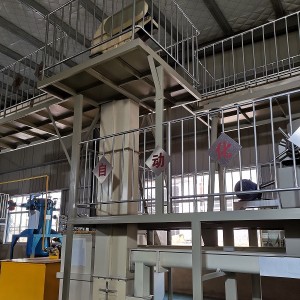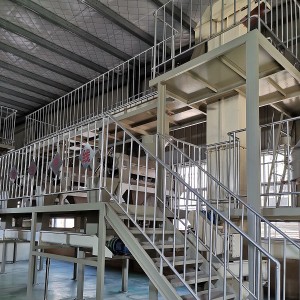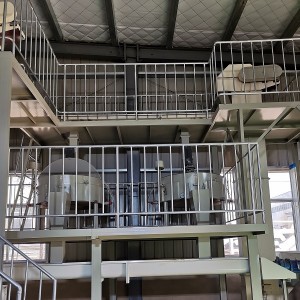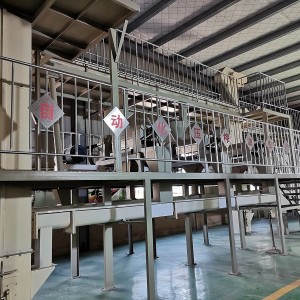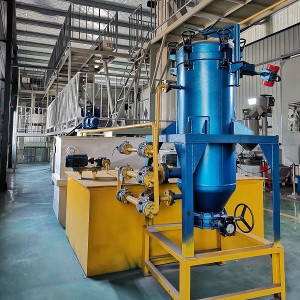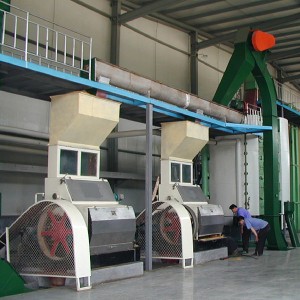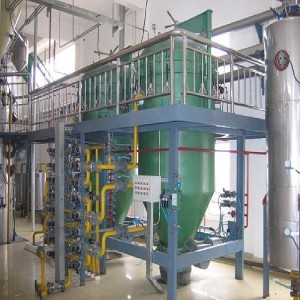Sesame Oil Press Machine
Section Introduction
For the high oil content materialďź sesame seed, it will need pre-press, then the cake go to solvent extraction workshop, oil go to refining. As a salad oil, it is used in mayonnaise, salad dressings, sauces, and marinades. As a cooking oil, it is used for frying in both commercial and home cooking.
Sesame oil production line
including: Cleaning----pressing----refining
1. Cleaning(pre-treatment) processing for the sesame oil production line
As for the cleaning processing for the sesame production line, It is including the cleaning, magnetic separation, flake, cook, soften and so on, all the steps are prepared for the oil pressing plant.
2. Pressing processing for sesame oil production line
After the cleaning(pre-treatment), the sesame will go to the pressing processing. As for the sesame, there are 2 kinds of oil press machine for it, screw oil press machine and hydraulic oil press machine, we can design the pressing plant according to the customer’s request.
3. Refining processing for sesame oil production line
After pressing, we will got the crude sesame oil, and then the oil will go to refining plant.
The flowchart of refining processing is Crude sesame oil--Degumming and Deacidification--Decolorizathin--Deodorization---Refined cooking oil.
Introduction of sesame oil refining machine
Neutralization: the crude oil is output by the oil feed pump from the oil tank, and next enters the crude oil heat exchanger to recover part of heat after metering and then is heated to the required temperature by the heater. After that, the oil is mixed with the metered phosphoric acid or citric acid from phosphate tank in the gas mixture (M401), and then enters the conditioning tank (R401) to make the non-hydratable phospholipids in oil change into the hydratable phospholipids. Add the alkali for neutralization, and the alkali quantity and alkali solution concentration depend on the quality of the crude oil. Through the heater, the neutralized oil is heated to the temperature (90℃) suitable for centrifugal separation to remove the phospholipids, FFA and other impurities in the crude oil. Then the oil goes to the washing process.
Washing: there is still about 500ppm soap in the neutralized oil from the separator. To remove the remaining soap, add into the oil about 5~8% hot water, with water temperature 3~5 ℃ higher than the oil generally. To achieve more stable washing effect, add phosphoric acid or citric acid when washing. The re-mixed oil and water in the mixer is heated to 90-95℃ by the heater, and then enters the wash separator to separate the remaining soap and most water. The water with soap and oil enters into oil separator to separate out oil in the water. Further catch the oil outside, and the waste water is discharged to the sewage treatment station.
Vacuum drying stage: there is still moisture in the oil from the wash separator, and the moisture will affect the stability of the oil. So the oil at 90℃ should be sent to vacuum drier to remove the moisture, and then the dehydrated oil goes to the decoloring process. Finally, pump out the dry oil by canned pump.
Continuous Refining Decoloring Process
The main function of decoloring process is to remove oil pigment, residual soap grain and metal ions. Under negative pressure, the mechanical mixing method combined with steam mixing will improve the decoloring effect.
The degummed oil firstly enters into the heater to be heated to the appropriate temperature (110℃), and then goes to the bleaching earth mixing tank. The bleaching earth is delivered from the low bleaching box to the temporary tank by wind. The bleaching earth is added by automatic metering and is interlockingly controlled with the oil.
The oil mixed with the bleaching earth overflows into the continuous decolorizer, which is stirred by non-powered steam. The decolored oil enters into the two alternate leaf filters to be filtered. Then the filtered oil enters the decolored oil storage tank through the security filter. The decolored oil storage tank is designed as the vacuum tank with the nozzle inside, so as to prevent the decolored oil contacting with the air and influencing its peroxide value and color reversion.
Continuous Refining Deodorizing Process
The qualified decolored oil enters into the spiral plate heat exchanger to recover most of the heat, and next goes to high pressure steam heat exchanger to be heated to the process temperature (240-260℃) and then enters the deodorization tower. The upper layer of combined deodorization tower is the packing structure which is mainly used to remove the odor producing components such as free fatty acid (FFA); the bottom layer is the plate tower which is mainly for achieving the hot decoloring effect and reducing the peroxide value of the oil to zero. Oil from the deodorization tower enters into the heat exchanger to recover most of the heat and makes further heat exchange with crude oil, and then is cooled to 80-85℃ through the cooler. Add the required antioxidant and flavor agent, and then cool the oil below 50℃ and store it. Such volatiles as FFA from the deodorizing system are separated by the packing catcher, and the separated liquid is FFA at low temperature (60-75℃). When the liquid level in the temporary tank is too high, the oil will be sent to the FFA storage tank.
|
No. |
Type |
Heated Temperature(℃) |
|
1 |
Continuous Refining Decoloring Process |
110 |
|
2 |
Continuous Refining Deodorizing Process |
240-260 |
|
No. |
Workshop Name |
Model |
QTY. |
Power(kw) |
|
1 |
Extrude Press Workshop |
1T/h |
1 Set |
198.15 |





